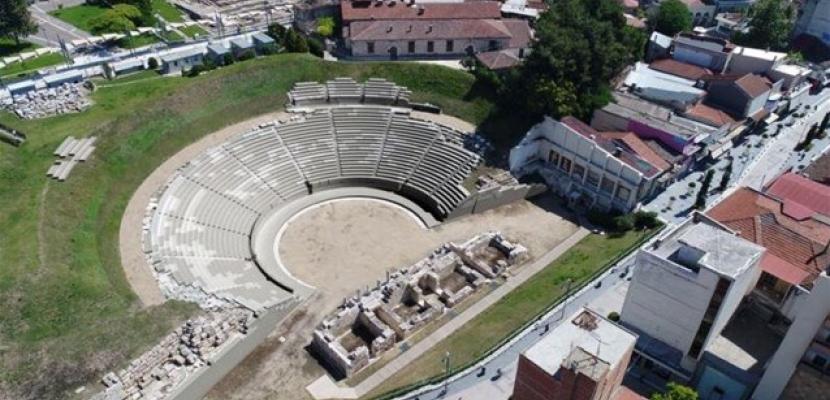Image

Restoration of the First Ancient Theater of Larissa
Published on 17 January 2020

Greece
This is the good practice's implementation level. It can be national, regional or local.
About this good practice
Until recently, the largest part of the First Ancient Theatre of Larissa had been lying under private plots and residences, but thanks to excavation works in recent years, it came to light almost in its entirety. Until 1950, the damage caused to the monument by the buildings constructed on it was insignificant, almost negligible. From that decade onwards, however, and particularly during the 1960s, the damage caused by the new buildings which replaced the old became extremely serious. The restoration process has begun from 1985 until today and of critical importance to the full excavation of the monument in recent years has been an extensive Ministry of Culture expropriation programme. The Ephorate of Antiquities of Larissa is the organisation responsible for the monument while the Municipality of Larissa has financed relevant studies to be financed by ERDF resources. In addition several other stakeholders have similarly financed studies and relevant activities in order to speed up procedures, namely the Municipal Water and Sewerage Company of Larissa (private company, owned by the Municipality), the “Kanellopoulos Foundation” and “Diazoma” association.
Expert opinion
The practice is a positive example of combining several sources of financing, such as ERDF, crowdfunding, donation, municipal funds, etc. as well as other funds, for the restoration works implemented at a major archaeological site. The learning potential is also in the various governance levels involved in the project (national, regional and local), which required proper coordination. Besides, the practice is also interesting with the fact that part of the funds came from a municipal company, foundation and association. The overall idea for securing financing for a site of this scale and its implementation can provide helpful insight to other local authorities how to find the optimum financing mix for a large-scale heritage project and ensure proper mechanism for cooperation in order to preserve and restore successfully a cultural heritage asset.
Resources needed
ERDF Funding: More that 10 million euros so far
Other funds (crowdfunding, donations and own resources): More than 2 million euros from both Municipality of Larissa, Municipal Water and Sewerage Company of Larissa,Kanellopoulos Foundation,Diazoma association and JMKaplan Fund among others
Other funds (crowdfunding, donations and own resources): More than 2 million euros from both Municipality of Larissa, Municipal Water and Sewerage Company of Larissa,Kanellopoulos Foundation,Diazoma association and JMKaplan Fund among others
Evidence of success
From the beginning of the restoration, three periods of expropriations were carried out, for more than 5 million euros in total while another 1 million has just been granted for the last phase. In terms of scientific importance more than 2,500 inscriptions and 150 sculptures have been revealed while the theater is considered to be one of the largest in Greece with its 10,000 seats
Potential for learning or transfer
Since it is a very complex project, due to its size, location, archeological significance as well as the fact that there are still buildings that cover part of it, the combination of several parallel and complementary resources used and the legal status of the organizations involved (Ministry, Region, Municipality, Municipal Company, Foundation and Association) make the project extremely interesting and highly recommended for transferring. Various specialized and costly studies needed to be drafted in order to secure funds for excavation and construction works and the Ephorate of Antiquities of Larissa didn’t have the necessary capacity to achieve them. Nevertheless, the resource coming from the Municipaliy of Larissa, the Municipal Water and Sewerage Company of Larissa, the “Kanellopoulos Foundation” and “Diazoma” association have secured its continuation and feasibility and managed to secure more funding from ERDF-Regional Operational Programme 2014-2020, in order to finish the works
Further information
Website
Good practice owner
You can contact the good practice owner below for more detailed information.
Organisation
Ephorate of Antiquities of Larissa (public organisation-official department of the Hellenic Ministry of Culture and Sports)

Greece
Thessalia
Contact
EU funds expert